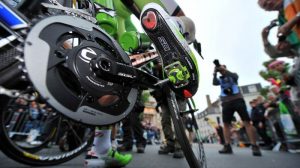If you’ve ever watched professional cyclists, or the Tour de France, you’ve probably admired the way they seem to glide along effortlessly at speeds of up to 60km/h.
Skilled cyclist’s legs move in a smooth and coordinated pattern whether they’re going up a steep incline or riding on a flat road. A huge part of that apparent ease comes from having the correct cadence at the correct time.
What is cadence?
Put simply, cadence is the rate at which a cyclist pedals. It is the number of revolutions per minute (RPMs) of the cranks and it is directly proportional to wheel speed.
In our experience, one of the biggest factors which effects your ability to maintain a high cadence is your overall fitness. As you become fatigued you are more likely to default to pushing bigger gears with a lower cadence. This is a type of “survival mechanism” as it helps to conserve energy, but it also increases the stress on your hips, knees and lower back.
That is why we recommend training consistently throughout the week. One long ride in the weekend, with no riding during the week, makes it very difficult to focus on, and improve, specific aspects of your cycling – like cadence. The weekend warrior, tends to find it difficult to improve and often complains of lack of improvement week on week.
What should your cadence be?
Everyone is different, but for most cyclists, aiming for around 90 RPM is a good goal.
Recreational cyclists typically cycle at around 60 – 80 RPM, while advanced and elite cyclists pedal anywhere from 90 to 110 RPM.
Riding at a high cadence of around 85-90 RPM puts more stress on your heart and lungs, but a lot less stress on your legs and back. This means you delay leg fatigue and, once you have the cardio vascular fitness, you can maintain your pace for a lot longer. Riding at a low cadence means you have to push harder on the pedals to turn the cranks around which puts more stress on your knees, hips and back especially.
Riding in a big gear (hard to push the pedals) means you travel quite a long distance per pedal stroke, but it requires a lot of strength (torque). The muscle strength required for this bigger gear work is harder to maintain over a long distance. We also find this approach is a lot riskier in terms of injury.
Riding in a small gear (spinning / easy to push the pedals) means you might have to turn the cranks over 3 times to travel the same distance as one revolution in a big gear, but it doesn’t require as much strength, and ultimately creates a more efficient pedal stroke.
All of that said, changing your cadence isn’t something you can do overnight – it can take weeks, or sometimes even months. Your body will have adapted to your current cadence, and changing it requires some concentration and effort.
How to determine your current cadence?
Before you set out to increase your cadence, you need to measure what it currently is.
The best method to measure your cadence is to pick a flat section of road with no traffic interruptions ideally 20 30 minutes into your ride so you are well warmed up.
Riding at your normal comfortable speed you should count the number of times your left knee (or right, just not both) comes up during a ride in 30 seconds. Double this number, and you have your revolutions per minute. Repeat this 2 or 3 times over at least a couple of rides and work out the average.
A lot of bicycle computers these days have sensors that attach on the crank that will measure cadence for you as well. These are simple to use, will give you a more accurate result, and the best thing is that you can see your cadence in real time as you ride. If you see your cadence dropping you should change into an easier gear in order to maintain it. Your speed will drop away, but what is more important your current speed or the health of your kneecaps for the next 20 years?
How to improve your cadence
Once you have measured your cadence and determined whether or not it needs to increase, you can then set about working on increasing it.
If your current cadence is 80 RPM for example, the easiest way to increase your cadence is to change into an easier gear, but try to maintain the same speed.
This will probably feel strange initially because your body is not used to it. Humans are creatures of habit. If you have “always” ridden at 80RPM, then riding at 90RPM will feel awkward and uncoordinated until your body and your brain adapt to the new movement pattern.
If you lose focus and forget about your cadence for a while, you will probably find that you have subconsciously flicked back down a gear or two and drifted back to your usual 80 RPM habit.
With continued practise, over a few weeks your body and brain will adapt to the new cadence and that will become your new “normal”.
Indoor training sessions are a fantastic opportunity to work on your cadence. On the trainer you don’t have the added distractions of your riding mates, cars on the road, or frequent traffic light interruptions.
If you are really determined to improve your cadence quickly then adding 2 or 3 short (e.g. 20 – 30 minute) indoor trainer sessions per week to your training plan will help a lot. Our body’s create new habits through repetition, so 2 or 3 shorts sessions per week will be more effective in changing your cadence than one longer session per week.
Add some body maintenance exercises to help your cadence
Having a cycling-specific body maintenance program in place will also help you to maintain your cadence over longer rides.
Making sure you have enough mobility and flexibility through your lower back, hips and knees, and also learning to use the correct muscle groups to turn the pedals will reduce the amount of fatigue you experience in your legs, allowing you to maintain a higher cadence for longer.
The Body Mechanic Run Strength and Conditioning Classes every Monday and Wednesday in Nth Sydney. These classes are a great way to work on your overall fitness and strength.
For optimum cadence and injury prevention you need the correct bike set up
We specialise in treating cycling related injuries and improving your position on the bike with our bikefitting service. We have helped thousands of cyclists over the past 10 years to improve their technique and reduce their injuries. Cadence has been one of the most effective and beneficial changes a lot of those cyclists have made. If you want to take your cycling to the next level, and you haven’t yet focused on your cadence, make sure you do. It can transform your riding.
If you are feeling uncomfortable on the bike, or feel like you are finding it harder than you would expect to build up your riding volume, then your bike set up could be the issue. If your saddle is either too high, or too low, or your bars are not sitting in the optimum position, then you are probably using your muscles in an inefficient way.
A bikefit at The Body Mechanic is a fantastic way to get customised feedback and adjustments on your current set up to make sure your position is optimal, and to ensure you are using the correct muscles to push on the pedals.
Learn more about our BikeFits.
All entrants in this year’s Bowral Classic receive 25% off a Complete Bike and Body fit by The Body Mechanic. This special offer is available when you book The Complete Bike and Body Fit, which includes an expert Bike Service. The Complete Bike Fit will take approx. 2 hours. Full details of the offer are included below.
It’s recommended that you come in as soon as possible so you get the maximum benefit in your training and avoid injury in the lead up to your race.
Call them to take advantage of this offer on 02 9955 5842.







